Tom Mix Museum [OK]
The Museum houses items from actor Tom Mix's personal collection, providing a glimpse into the life of one of Oklahoma's famous figures.
The museum offers exhibits.
The Museum houses items from actor Tom Mix's personal collection, providing a glimpse into the life of one of Oklahoma's famous figures.
The museum offers exhibits.
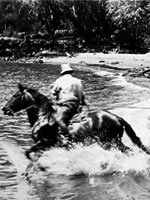
These 29 collections document the history of Hawaii and Micronesia from 1834 to the 1990s. "Annexation of Hawai'i," for example, contains thousands of pages of documents concerning the U.S. plan to annex Hawaii, realized in 1898. Materials include the 1,437-page Blount Report of 189495, initiated by President Grover Cleveland on the history of relations between the U.S. and Hawaii and the planned annexation; Congressional debates on the Hawaii Organic Act, passed in 1900 to establish a territorial government; and Hawaiian anti-annexation petitions and protest documents from 189798.
"Hawaii War Records" presents 880 photographs documenting the impact of World War II on Hawaii and its people. The "Trust Territories of the Pacific Islands" photo archive provides 52,000 photographs on programs in education, health, and political and economic development in the 2,100 islands of Micronesia administered by the U.S. from 1947 to 1994. The website also includes a collection of 16 Hawaiian-language newspapers.
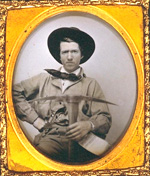
This archive provides more than 81,000 images and 1,000 texts on the history and culture of California. Images may be searched by keyword or browsed according to six categories: history, nature, people, places, society, and technology. Topics include exploration, Native Americans, gold rushes, and California events.
Three collections of texts are also available. Japanese American Relocation Digital Archive furnishes 309 documents and 67 oral histories. Free Speech Movement: Student Protest, U.C. Berkeley, 19641965 provides 541 documents, including books, letters, press releases, oral histories, photographs, and trial transcripts.
UC Berkeley Regional Oral History Office offers full-text transcripts of 139 interviews organized into 14 topics including agriculture, arts, California government, society and family life, wine industry, disability rights, Earl Warren, Jewish community leaders, medicine (including AIDS), suffragists, and UC Black alumni.
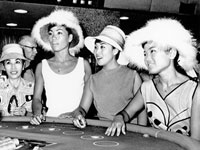
Established in 1905, Las Vegas, NV, officially became a city in 1911. Its growth and development over the course of the 20th century is documented through this diverse collection of oral histories. Eight oral histories, in video, audio, and transcript format, expose aspects of daily life in early Las Vegas from the 1930s to the 1960s. Las Vegas showgirls Anna Bailey, Carol Baker, Betty Bunch, Sook-ja, Ai-ja, Mia Kim, and Virginia James discuss working conditions on the Las Vegas strip in the 1960s and 70s as well as their involvement with prominent shows, the racial integration of showrooms, and the growth of the Las Vegas Korean community. Present-day Las Vegas comes to life through oral histories and videos of six women in their 70s and 80s who tap dance together several times a week at the West Las Vegas Arts Center. Segregation, integration, the Nevada Test Site, and local history in Las Vegas are the focus of the oral history roundtable with Rose Hamilton and four other women who grew up together in Las Vegas and remain friends to this day.
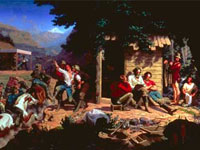
In commemoration of the 1848 California Gold Rush, the Oakland Museum opened a series of exhibitions and created this online companion site. Sponsored by Kaiser Permanente, this virtual tour of the museum's exhibition offers an extensive (roughly 5,000-word) narrative of the Gold Rush and its history, illustrated with over 50 images of posters, photographs, artifacts, and art related to the Gold Rush. Three audio narratives discuss details of the discovery of gold and the resulting massive westward migration. Also included on the site are 28 images of artwork and 22 photographs of related subjects.
Site visitors can explore the experiences of Chinese, Latino/Californio, Native American, and African American peoples who participated in the Rush. Links to three curriculum sites and sample curriculum materials are available for grades 4, 5, 8, and 11; five curriculum units and 18 lesson plans can be purchased from the museum. The site is ideal for researching California history and westward expansion.
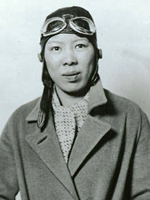
This site offers a large archive of selected documents, reports, records, maps, photographs, newspapers, artifacts, and oral history interviews. Items are searchable by ethnic group, keyword, archive, type of material, date, or subject. Brief historical overviews and bibliographies for each ethnic group profiled are also available in the archive section. Another section has lessons plans for teachers on African Americans, immigration and settlement, migration, and ethnic culture and identity, 1850-1950. It also offers tutorials on using the archive, using history databases on the web, interpreting photographs, interpreting documents, and interpreting oral history. Historical overviews are provided on the various ethnic groups that settled the Columbia River Basin.
A discussion forum offers a place to talk about discoveries in the archive or questions. Topics currently include ethnic groups, ethnicity and race, work and labor, immigration and migration, family life, religion, social conditions, discrimination, and civil rights. A very useful site for researching or teaching the social and cultural history of the Columbia River Basin.
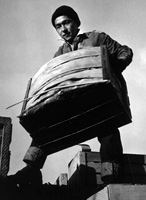
During World War II, the U.S. Government forced more than 100,000 Japanese Americans to leave their homes and businesses, relocating them to internment camps from California to Arkansas. Well-known photographer Ansel Adams documented the lives of Japanese Americans at the Manzanar War Relocation Center in California—from portraits to daily life, including agriculture and leisure.
This site presents 242 original negatives and 209 photographic prints, often displayed together to show Adams's developing and cropping techniques. His 1944 book on Manzanar, Born Free and Equal is also reproduced. Adams donated the collection to the Library of Congress in 1965, writing, "The purpose of my work was to show how these people, suffering under a great injustice . . . had overcome the sense of defeat and dispair [sic] by building for themselves a vital community in an arid (but magnificent) environment."
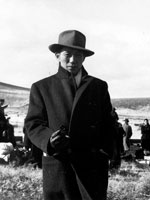
Based on a 1987 Smithsonian exhibition, this site allows visitors to click and drag through sections of text, music, personal accounts, and images that tell stories of the forced—and ultimately determined to be unconstitutional—internment during World War II of 120,000 Japanese Americans living on the West Coast. Also provides searching capabilities to retrieve images of more than 800 artifacts relating to the lives of those interned.
Sections in the narrative cover immigration, removal, internment, loyalty, service, and justice. Provides a 5,000-word audio file of interview excerpts; 6,400-word accompanying text from the 1994 traveling exhibition; annotated timeline; 72-title bibliography; 20 links to related sites; and two classroom activities. Also invites visitors to share their responses and to read those of others. Of value to students of Asian American history, the homefront during World War II, and constitutional issues.

If America had opened its ports at Pearl Harbor and the Philippines to the Russians prior to 1941, do you think that might have delayed or caused the Japanese to think twice about attacking these places, so as not to get America and Russia combined against them?
Most probably not. Although the Japanese generally avoided attacking Russian ships, there simply was not a lot of Soviet merchant shipping in the Pacific at the time. And perhaps more important, there were almost no Soviet warships in the region, so the chance of the Japanese attackers encountering and engaging with Russian ships by accident was small. Even if they had, Japan and Russia had chosen to gloss over incidents in the recent past because they calculated it was in their larger interests to do so. The chance that Japanese attackers might have damaged Russian ships did not affect Japanese planning.
American ports were not closed to Russian warships or merchant ships. A fleet of 11 Soviet ships, for example, left port at Balboa, U.S. Canal Zone, in July 1939, for the Russians' naval base at Vladivostok. Four mine layers among the fleet went by way of San Francisco, and the other ships went by way of the merchant shipping port facilities next to Honolulu.
Russian freighters and tankers often used port facilities in Los Angeles, San Francisco, Seattle, and Dutch Harbor, Alaska. It was Russia's merchant ships, not its navy, that crossed the Pacific at this time. At the beginning of World War 2, many of the Soviet Union's warships, in fact, had been purchased from or built by the U.S. The bulk of its navy was based in the west, in Leningrad, Kronstadt, Sevastopol, Odessa, and Murmansk.
Soviet maritime activity, both mercantile and military, had waxed and waned from the late 19th century to the World War 2 period. Japan was a regional rival and this tension erupted in the 1904-05 Russo-Japanese War, in the course of which Japan all but obliterated the Russian fleet and emerged as a world naval power. The 1917 Russian Revolution and 1919-21 civil war drew off much of the Russian military presence in the Far East and Pacific region, but it began to build up again, including at its Pacific base in Vladivostok, in response to Japanese incursions in China in the late 1920s and into the 1930s. The Soviet Pacific Ocean Fleet at that time consisted almost entirely of small submarines, torpedo boats, and coastal patrol boats.
Almost all of the Soviets' "blue water," heavy warships were in the west. This did not have anything to do with American policy regarding its ports. In short, Russian warships would not have been cruising the Pacific, either in Hawaii or the Philippines, before the war. They were needed elsewhere.
The Soviet-Japanese Neutrality Pact was signed in April 1941. Cross-border skirmishes in Japanese-occupied Manchuria and in Mongolia motivated Japan to sign in order to keep Russia from tying it down in northern Asia while it accomplished its goals of territorial expansion in Southeast Asia. Russia signed it because it was focusing its military might to the west, supplying Germany with food and war material, in line with the August 1939 Molotov-Ribbentrop Pact, but also preparing for a confrontation with Germany itself. That came in June 1941, when Germany suddenly invaded the Soviet Union.
At that time, Japan, as an ally of Germany, apparently briefly considered abrogating its neutrality pact with the Soviets and invading Russia, but decided against it in favor of focusing on military conquests toward the south. Both the Soviets and the Japanese found it expedient to honor their neutrality pact throughout most of the war. That included, for Japan, allowing passage to Russian merchant ships that were carrying supplies from the U.S. to Vladivostok.
After the 1939 Molotov-Ribbentrop Pact, the U.S. had conducted its Russian trade warily, with some constraints on what it would allow to be sold to the Russians (to try to prevent material from being further shipped to Germany). Britain, during this time, pressed the U.S. to drastically reduce its trade with Germany, Italy, and Japan, as well as Russia, as a partner in its "economic warfare."
From the summer of 1941, after Germany invaded Russia, U.S. relations with the Soviet Union went into flux, as FDR's administration moved to convert a near-adversary into an ally. In September 1941, for example, FDR promised Russia that the U.S. would deliver five new B-17s, flying them to Russia over the skies of Germany. U.S. constraints on sales were lifted and America began shipping food, fuel, and other war material to Russia, via Vladivostok, under the terms of the Lend Lease Act.
At nearly the same time, Roosevelt, not wishing to subsidize Japan's expansion in Asia, stopped shipment of U.S. oil and gasoline to Japan. It was at this point that Japan concluded that it would have to go to war with the U.S. in order to ensure its own territorial expansion. From Japan's point of view, at least privately, the die had been cast. The U.S. was still, however, trying to sort out its interactions with Russia under the changed circumstances. No joint naval operations, for example, had been authorized by the U.S. Chief of Naval Operations by the end of 1941.
Although the Germans pressured their Japanese allies to stop the shipping of U.S. goods via Russian freighters to Vladivostok, it continued, mostly unmolested, throughout the war. Both the Russians and the Japanese generally went out of their way avoid conflict with each other, despite isolated incidents. On May 1, 1942, a Japanese submarine sunk the Soviet cargo ship Angarstroi, loaded with sugar, in the Sea of Japan after it was detained, searched, and released by the Japanese Navy. At first, the Japanese blamed it on an American submarine, but the Soviets were not fooled and tensions escalated. The same month, a Japanese submarine exchanged fire with a Russian freighter off the coast of Australia.
At that point in the war, Japan was riding on the crest of victories at Pearl Harbor and the Philippines and it is possible that some of its naval officers were emboldened enough to disregard the Russia-Japan Neutrality Pact. Both countries built up their forces facing each other, separating Siberia from Manchuria, and Outer Mongolia from Inner Mongolia, but Russian and Japanese diplomats and military officers decided to pass over the incidents at sea and Russia and Japan continued to avoid conflict.
The Japanese meticulously planned their attacks at Pearl Harbor on December 7, 1941, and, on the following day, at Manila. Their goal, which they largely (though only temporarily) achieved, was to destroy or disable the American Pacific fleet, especially its capital ships (aircraft carriers and battleships), in order to clear obstacles to the Japanese invasion of suth and southwest Asia, starting with the Philippines.
For the Pearl Harbor attack, the attacking Japanese pilots knew the composition of the American fleet and targeted specific ships. They were even prepared to fly to Maui in pursuit of these particular ships if the fleet had moved to its occasional anchorage at Lahaina.
The attackers, in other words, were not aiming to cause general chaos and destruction, but rather to destroy specific warships, to the extent that they could locate them. (The Americans' aircraft carriers happened to be out at sea that morning). The Japanese did not attack the merchant docks in Honolulu Harbor, and so, whatever foreign freighters happened to be there were not imperiled. The attack on the Philippines 10 hours later was aimed particularly at destroying U.S. military airpower in the Pacific, the B-17s and P-40s at Clark and Iba air bases. This would give Japan's airplanes uncontested control of the air and, therefore, allow the Japanese army's invasion of the Philippines.
Gordon William Prange, At Dawn We Slept: The Untold Story of Pearl Harbor (New York: Penguin, 2001).
William H. Bartsch, December 8, 1941: MacArthur's Pearl Harbor (College Station: Texas A&M Press, 2003).
Kinoaki Matsuo, How Japan Plans to Win. Trans. Kilsoo K. Kaan (Boston: Little, Brown and Company, 1942).
Donald M. Goldstein and Katherine V. Dillon, eds. The Pearl Harbor Papers: Inside the Japanese Plans (Washington: Brassey's, 1993).
Ian Kershaw. Fateful Choices: Ten Decisions That Changed the World, 1940-1941 (New York: Penguin, 2007), pp. 331-381.
Donald W. Mitchell, A History of Russian and Soviet Sea Power (New York: Macmillan, 1974).
Mairin Mitchell. The Maritime History of Russia, 848-1948 (Freeport, NY: Books for Libraries, 1969).
Jurgen Rohwer and Mikhail S. Monakov. Stalin's Ocean-Going Fleet: Soviet Naval Strategy and Shipbuilding Programmes, 1935-1953 (New York: Frank Cass Publishers, 2001).
"Russia, Japan Mobilize; Soviet Gunboat Is Sunk; Ultimatum for Moscow," Washington Post, July 1, 1937, p. 1.
"Soviet Ships Quit Panama: Vessels Take Diverse Routes on Trip to Vladivostok," New York Times, July 18, 1939, p. 10.
"Soviet Attitude Toward Chinese Influenced by Stand U.S. Takes," New York Times, July 14, 1940, p. 29.
Raymond Daniell, "British Seek the Enlistment of U.S. in Economic War on Axis and Allies," New York Times, January 29, 1941, p. 1.
Bertram D. Hulen, "Soviet Requests U.S. Help; Offers to Pay for Supplies," New York Times, July 2, 1941, p. 1.
"Russian Ship Shelled: Japanese Submarine Driven Off in Attack Off Australia," New York Times, June 26, 1942, p. 2.
"Soviet Ship Sunk by Japs," Los Angeles Times, June 26, 1942, p. 1.
"Japan Lets Russia Get Our Supplies," New York Times, March 13, 1943, p. 4.
John G. Norris, "Knox Sees Little Chance of Russo-Jap War Now," Washington Post, June 23, 1943, p. 3.
Barnet Nover, "Japan and Russia: Is Their Truce About to End?" Washington Post, August 14, 1943, p. 4.
"It Depends on Who's Winning," Los Angeles Times, November 16, 1944, p. A4.
Pearl Harbor Attack, 7 December 1941. Department of the Navy, Naval History & Heritage Command.
Images:
"This is Not [a] Drill" Dispatch, 12/07/1941, National Archives and Records Administration, Waltham, Massachusetts.
Aerial Photograph of Pearl Harbor, Hawaii: 01/07/1941, National Archives and Records Administration, Washington, D.C.
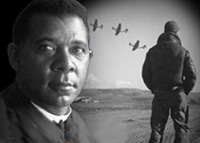
Historical aspects of many of the 384 areas under the National Park Service's stewardship are presented in this expansive site. A "Links to the Past" section contains more than 25 text and picture presentations on such diverse history-related topics as archeology, architecture, cultural groups and landscapes, historic buildings, and military history. Of particular interest to teachers, a section entitled "Teaching with Historic Places" features more than 60 lesson plans designed "to enliven the teaching of history, social studies, geography, civics, and other subjects" by incorporating National Register of Historic Places into educational explorations of historic subjects. Examples include an early rice plantation in South Carolina; the lives of turn-of-the-century immigrant cigar makers near Tampa, Florida; a contrast between the Indianapolis headquarters of African-American businesswoman Madam C. J. Walker and a small store in Kemmerer, Wyoming, that grew into the J. C. Penney Company, the first nationwide department store chain; the Civil War Andersonville prisoner of war camp; President John F. Kennedy's birthplace; the Liberty Bell; Finnish log cabins in Iowa; and the Massachusetts Bay Colony's Saugus Iron Works. Especially useful for teachers interested in connecting the study of history with historic sites.